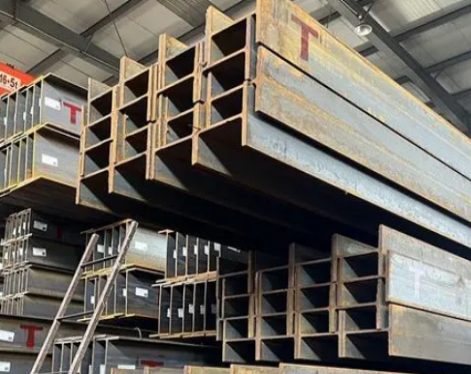The maximum wall thickness of thick-walled seamless pipe is up 60mm
Seamless steel pipes are represented by outer diameter and wall thickness. Thick-walled seamless steel pipes are mainly used for mechanical processing, coal mines, hydraulic steel and other purposes.
Thick-walled seamless pipe production is divided into cold-drawn and hot-rolled, and the material is divided into ordinary pipe and alloy pipe. According to the purpose, it is divided into seamless steel pipes for structure; seamless steel pipes for transportation; seamless steel pipes for boilers; high-pressure seamless steel pipes for boilers; high-pressure seamless steel pipes for fertilizer equipment; seamless steel pipes for geological brick exploration; Seam steel pipes; seamless steel pipes for petroleum cracking; seamless steel pipes for ships; cold-drawn cold-rolled precision seamless steel pipes; various alloy pipes.
Classification of thick-walled seamless steel pipes-hot-rolled thick-walled seamless steel pipes, cold-rolled thick-walled seamless steel pipes, cold-drawn thick-walled seamless steel pipes, extruded thick-walled seamless steel pipes, pipe jacking.
The calculation formula of steel pipe weight: [(outer diameter-wall thickness)*wall thickness]*0.02466=kg/m (weight per meter).
The calculation formula for the theoretical weight of thick-walled seamless pipe stainless steel: (outer diameter-wall thickness) × wall thickness × 0.02491 = KG/M (weight per meter).
The theoretical weight calculation formula of thick-walled seamless pipe alloy steel: (outer diameter-wall thickness) × wall thickness × 0.02486 = KG/M (weight per meter).
Tensile strength of thick-walled seamless pipe
The biggest difference between thick wall steel pipe and thin wall steel pipe is the pipe wall thickness, in general, are drawn thin-walled steel technology, and general use of hot-rolled thick-walled steel pipe technology, if it is used to distinguish between units of measure, then, generally, the wall thickness / diameter equal to 0.02 is thick and thin-walled steel pipe watershed, wall thickness / diameter less than 0.02 thin-walled steel pipe, thick wall steel pipe is greater than in the purposes, the thin-walled steel multi-purpose the pipe. The multi-walled steel hollow parts used in the blank. Pressure as well as an important channel to use.
Thick-walled steel mainly used in water engineering, petrochemical industry, chemical industry, power industry, agricultural irrigation, urban construction. For the transport of liquids: water supply and drainage. For gas transportation: gas, steam, liquefied petroleum gas. For structural purposes: as piling pipe for bridges; docks, roads, buildings and other structures tube.
The key of quality for thick wall steel pipe should be thickness uniformity, thick-walled steel pipe wall thickness is not controlled directly affect the quality and usefulness of steel pipe, thick wall steel pipe, large diameter seamless steel pipe for general use in a variety of machining, thick wall parts processing, uniform wall thick-walled steel pipe will directly affect the quality of post-processed parts, thick-walled steel pipe wall is not controlled, the overall quality of steel is not strictly.
Seamless steel pipes are represented by outer diameter and wall thickness. Thick-walled seamless steel pipes are mainly used for mechanical processing, coal mines, hydraulic steel and other purposes.
Thick-walled seamless pipe production is divided into cold-drawn and hot-rolled, and the material is divided into ordinary pipe and alloy pipe. According to the purpose, it is divided into seamless steel pipes for structure; seamless steel pipes for transportation; seamless steel pipes for boilers; high-pressure seamless steel pipes for boilers; high-pressure seamless steel pipes for fertilizer equipment; seamless steel pipes for geological brick exploration; Seam steel pipes; seamless steel pipes for petroleum cracking; seamless steel pipes for ships; cold-drawn cold-rolled precision seamless steel pipes; various alloy pipes.
Classification of thick-walled seamless steel pipes-hot-rolled thick-walled seamless steel pipes, cold-rolled thick-walled seamless steel pipes, cold-drawn thick-walled seamless steel pipes, extruded thick-walled seamless steel pipes, pipe jacking.
The calculation formula of steel pipe weight: [(outer diameter-wall thickness)*wall thickness]*0.02466=kg/m (weight per meter).
The calculation formula for the theoretical weight of thick-walled seamless pipe stainless steel: (outer diameter-wall thickness) × wall thickness × 0.02491 = KG/M (weight per meter).
The theoretical weight calculation formula of thick-walled seamless pipe alloy steel: (outer diameter-wall thickness) × wall thickness × 0.02486 = KG/M (weight per meter).
Tensile strength of thick-walled seamless pipe
| Name | Weighing symbol | Unit | Description |
| strength | Strength refers to the ability of metal to resist plastic deformation and fracture under external force | ||
| tensile strength | σb | MPa | When a metal sample is stretched, the ratio of the maximum load it bears to the original cross-sectional area of the sample before it breaks is called the tensile strength. σ=Fb/So Where: Fb--the maximum force that the sample bears when it is broken, N (Newton); So--the original cross-sectional area of the sample, mm² |
The biggest difference between thick wall steel pipe and thin wall steel pipe is the pipe wall thickness, in general, are drawn thin-walled steel technology, and general use of hot-rolled thick-walled steel pipe technology, if it is used to distinguish between units of measure, then, generally, the wall thickness / diameter equal to 0.02 is thick and thin-walled steel pipe watershed, wall thickness / diameter less than 0.02 thin-walled steel pipe, thick wall steel pipe is greater than in the purposes, the thin-walled steel multi-purpose the pipe. The multi-walled steel hollow parts used in the blank. Pressure as well as an important channel to use.
Thick-walled steel mainly used in water engineering, petrochemical industry, chemical industry, power industry, agricultural irrigation, urban construction. For the transport of liquids: water supply and drainage. For gas transportation: gas, steam, liquefied petroleum gas. For structural purposes: as piling pipe for bridges; docks, roads, buildings and other structures tube.
The key of quality for thick wall steel pipe should be thickness uniformity, thick-walled steel pipe wall thickness is not controlled directly affect the quality and usefulness of steel pipe, thick wall steel pipe, large diameter seamless steel pipe for general use in a variety of machining, thick wall parts processing, uniform wall thick-walled steel pipe will directly affect the quality of post-processed parts, thick-walled steel pipe wall is not controlled, the overall quality of steel is not strictly.









